#oregon public broadcasting
Explore tagged Tumblr posts
Text
Archaeologists find new evidence in Southern Oregon that suggests human habitation 18,000 years ago
#harneycounty#oregon#eastern oregon#the great pnw#the old west#oregonoutback#pnw#oregon outback#harney county#archeology#opb#oregon public broadcasting
25 notes
·
View notes
Text
Will someone just please give Portland an MLB team?
This week, I saw a rather familiar story. The Portland Tribune wrote a story on the City Council “unanimously” agreeing to “formally support” bringing an MLB team to the area. The mayor of Portland even claimed that this resolution showed that the city was ��very serious” about getting a team. Now, I am not denying that they may be closer than ever, nor am I making fun of them for doing whatever…
#Economic Development Director#Investors#Lloyd Center#MLB#Native Americans#NFL#Oakland As#Oregon#Oregon Public Broadcasting#OregonLive.com#Portland#Portland Tribune#Public School#QB#Russell Wilson
0 notes
Text
On Earth Day in 2022, President Joe Biden stood among cherry blossoms and towering Douglas firs in a Seattle park to declare the importance of big, old trees. “There used to be a hell of a lot more forests like this,” he said, calling them “our planet’s lungs” and extolling their power to fight climate change. The amount of carbon trees suck out of the air increases dramatically with age, making older trees especially important. These trees are also rare: Less than 10% of forests in the lower 48 states remain unlogged or undisturbed by development. The president uncapped his pen, preparing to sign an executive order to protect mature and old-growth forests on federal lands. “I just think this is the beginning of a new day,” Biden said. But two years later, at a timber auction in a federal office in Roseburg, Oregon, this new day was nowhere to be seen. As journalists and protestors waited outside, logging company representatives filed through a secure glass door to a room where only “qualified bidders” were allowed. Up for sale this September morning were the first trees from an area of forest the Bureau of Land Management calls Blue and Gold. It holds hundreds of thousands of trees on 3,225 acres in southern Oregon’s Coast Range. Forests here can absorb more carbon per acre than almost any other on the planet. A week after Biden’s executive order, the Blue and Gold logging project had been shelved. Now it was back on. The BLM is moving forward with timber sales in dozens of forests like this across the West, auctioning off their trees to companies that will turn them into plywood, two-by-fours and paper products. Under Biden, the agency is on track to log some 47,000 acres of public lands, nearly the same amount as during President Donald Trump’s first term in office. This includes even some mature and old-growth forests that Biden’s executive order was supposed to protect. An Oregon Public Broadcasting and ProPublica analysis found the bureau has allowed timber companies to cut such forests at a faster pace since the executive order than in the decade that preceded it.
lesser evil 🤪
177 notes
·
View notes
Video
youtube
Exploring the magical world of garden railways | Oregon Field Guide Feb 6, 2025 #oregonfieldguide #RoseCityGardenRailway #MiniatureTrains Each year, the Rose City Garden Railway Society hosts an annual summer tour across the greater Portland metro area. They open their backyard railroads to share their passion for miniature backyard trains. Chapters: 0:00 Introduction to garden railroads: Hobbyist preparation & setup 1:40 The Rose City Garden Railway Society: Origins & history 3:02 Telling stories with garden railroads: The magic behind the models 4:50 Attention to detail: How railroad hobbyists achieve precision 5:40 The community spirit: How model railroad enthusiasts supported Alexis Barberis 7:00 The future of garden railroads: What’s next for the hobby? 8:27 CreditsFor more stories like this visit OPB online at https://opb.org --- Oregon Public Broadcasting aims to elevate and amplify the community, connect Oregon and its neighbors, and illuminate a wider world through stories. OPB Every Day. OPB Everywhere.
8 notes
·
View notes
Text
Excerpt from this story from Oregon Public Broadcasting:
At a small dam on Sun Creek made out of corrugated vinyl sheeting, National Park Service fish biologist Dave Hering shuts off water leading into a metal box the size of a small elevator.
Michael Scheu, one of Hering’s team members, climbs inside. Surrounding his feet are twelve bull trout. They got trapped here trying to head upstream. Scheu collects half of them in a black bucket, handing it off to another team member above.
Bull trout are the only remaining native fish species in Crater Lake National Park. They used to be found all over the Klamath Basin, Hering says, including nearby Fort Creek.
“Fort Creek is a place where a bull trout was sampled in the 19th century and actually held in the Smithsonian,” says Hering. “And for decades, including the whole first 15 years of my career here, we didn’t have bull trout there anymore.”
Competition from a closely related cousin, the brook trout, introduced for fishing in the early 1900s, was the primary factor leading to bull trout being listed as threatened under the Endangered Species Act in 1998.
Native to the eastern U.S., brook trout evolved with slightly different traits that allow them to outcompete the bull trout in its natural habitat. They mature at a younger age, thereby producing more eggs over a longer period of time than bull trout, among other advantages.
In 1989, scientists found a disturbingly small number of bull trout high up Sun Creek, inside the national park. Mark Buktenica is the now-retired fish biologist for the park service who began the effort to save the species.
“The National Park Service mandate from Congress is pretty clear,” Buktenica said on a 1999 episode of Oregon Field Guide. “We’re supposed to preserve and protect these ecosystems in their natural condition. Well, the natural condition for Sun Creek is to have resident bull trout.”
Back then, Buktenica and his team built two dams on Sun Creek to prevent non-native fish from getting further upstream. Then, they used a specialized poison to kill any brook trout upstream of the dams.
Hering took over Buktenica’s work when he retired in 2017. He says he’s gotten more and more invested since their population has grown in number.
“A lot of people — anglers and fish enthusiasts — describe it as sort of an ugly fish or one that isn’t as nice to look at as some others. But I think they’re beautiful,” Hering says.
Hering was there when, in 2017, scientists reconnected Sun Creek to the Wood River for the first time in over 150 years. The tributary had been isolated on private land and used for irrigation, cutting bull trout off from other parts of the Klamath Basin.
16 notes
·
View notes
Text
Creeps and Crawlies
there's a theme here...
Deep sea life BBC. "Alien like colossal squid - Museum of Life - BBC Two." YouTube. April 16, 2010. Real Science. "The Insane Biology of: The Cuttlefish." YouTube. November 11, 2023. Real Science. "The Insane Biology of: The Octopus." YouTube. November 14, 2020. Real Science. "Why Animals Get Creepier the Deeper You Go." YouTube. June 10, 2023. Real Science. "Why Do Deep Sea Creatures Evolve Into Giants?" YouTube. July 16, 2022. Ze Frank. "True Facts About The Angler Fish." YouTube. December 27, 2012. Ze Frank. "True Facts About The CuttleFish." YouTube. October 30, 2013. Ze Frank. "True Facts About The Octopus." YouTube. April 1, 2014. Fungi National Geographic. "Glow-in-the-Dark Mushrooms: Nature’s Night Lights | National Geographic." YouTube. February 18, 2015. National Geographic. "What's in a Lichen? How Scientists Got It Wrong for 150 Years | Short Film Showcase." YouTube. January 25, 2018. National Geographic. "You Didn’t Know Mushrooms Could Do All This | National Geographic." YouTube. July 13, 2016. PBS. "How Trees Talk to Other Trees with the Help of Fungi | The Green Planet | PBS." YouTube. July 26, 2022. PBS Eons. "When Giant Fungi Ruled." YouTube. December 18, 2017. Ze Frank. "True Facts: Fungi That Control The Insects They Eat." YouTube. April 28, 2023. Ze Frank. "True Facts: Stinkhorns." YouTube. November 20, 2019. Slime molds BBC. "Mould Time-lapse - The Great British Year: Episode 4 Preview - BBC One." YouTube. October 18, 2013. BBC Earth Science. "Can Slime Mould Solve Mazes? | Earth Science." YouTube. December 5, 2018. Oregon Public Broadcasting. "Slime molds are gorgeous (you just never knew it!) | Oregon Field Guide." YouTube. January 3, 2022. Real Science. "The Insane Biology of: Slime Mold." YouTube. May 13, 2023. Ze Frank. "True Facts: The Self-Sacrificing Amoeba." YouTube. August 4, 2022. Ze Frank. "True Facts: The Smartest Slime." YouTube. January 31, 2023. Spiders National Geographic. "Deadly Cousin: The Redback Spider | National Geographic." YouTube. December 2, 2011. National Geographic. "How Spiders Use Electricity to Fly | Decoder." YouTube. April 25, 2019. Nature on PBS. "Social Spiders Spin Massive Nest." YouTube. April 14, 2015. Real Science. "Why Spider Silk is Stronger Than Steel." YouTube. January 15, 2022. Smithsonian Channel. "Incredible: This Underwater Spider Has an Actual Scuba Tank." YouTube. January 13, 2017. Smithsonian Channel. "This Terrifying Spider Hunts Fish Underwater." YouTube. May 26, 2017. Ze Frank. "True Facts: Mating Dance of The Peacock Spider (feat. Quinta Brunson)." YouTube. February 20, 2020. Ze Frank. "True Facts: Tarantulas." YouTube. November 19, 2022. Ze Frank. "True Facts: The Bolas Spider." YouTube. March 15, 2019. Ze Frank. "True Facts: The Ogre Faced Spider." YouTube. September 26, 2019. Worms ABC Science. "Blood-sucking leeches changed Cole’s life." YouTube. May 29, 2023. BBC. "The Amazing World Of Earthworms In The UK - Springwatch - BBC Two." YouTube. June 6, 2012. National Geographic. "Ice Worms | National Geographic." YouTube. September 17, 2007. National Geographic. "This Creepy Worm Pulls Its Prey Deep Under the Ocean Floor | National Geographic." YouTube. January 31, 2017. National Geographic. "Weird Worms Live Near Pacific Ocean’s Deepest High-Temp Vent | National Geographic." YouTube. June 11, 2015. Ze Frank. "True Facts: Bobbit Worm and Polychaete Pals." YouTube. August 17, 2018.
#worms#bugs#spiders#insects#science#reference#nature#fungi#octopus#squid#fish#ze frank#smithsonian#national geographic#natgeo#pbs#pbs nature#pbs eons#bbc#lichen#bioluminescence#trees#slime mold#amoeba
10 notes
·
View notes
Text
The Biden administration agreed Thursday to spend more than $200 million to fully fund Native tribes’ plans to reintroduce salmon in the upper Columbia River basin — more than 80 years after construction of the Grand Coulee Dam rendered the fish extinct in parts of Washington, Idaho and British Columbia.
The unprecedented show of federal support is a course correction from the previous efforts of some federal agencies to resist tribal salmon restoration, which were documented in an August 2022 investigation by Oregon Public Broadcasting and ProPublica.
“This agreement is the start of fixing a wrong,” Greg Abrahamson, chair of the Spokane Tribe of Indians, said during the announcement of the agreement. “Grand Coulee Dam allowed the desert to bloom, and many faraway cities enjoyed the cheap electricity it produces, at my people’s expense.”
The announcement is also a recognition of the federal government’s long-standing violations of the fishing rights of sovereign tribes, some of whom have signed treaties with the U.S. government. Construction of Grand Coulee Dam destroyed the Columbia River fishing site of Kettle Falls, a regional trading hub and sacred site for many salmon-dependent tribes. It cut off hundreds of miles of river habitat for salmon, who migrate to the ocean as young fish and return to their home waters to spawn as adults. Salmon and other oceangoing fish once accounted for an estimated 60% of the historic diet for Northwest Indigenous people. After the construction of Grand Coulee and other dams in the upper Columbia basin, those fish disappeared.
After nearly 80 years without those fish, a coalition of tribes along the upper Columbia River developed in 2015 a multiphase plan to reintroduce salmon into areas where they’d been blocked.
The tribes’ long-term plan involves building hatcheries, releasing fish into waters above Grand Coulee, tracking their migration and developing plans to pass fish safely around the dams through techniques like trapping them and trucking them up or downstream. They designed the plan to ensure it does not interfere with hydropower generation at the federal government’s biggest dam on the Columbia.
33 notes
·
View notes
Text

#QSLfriday KBPS (1450 AM) is a high school radio station in Portland, Oregon. It is owned by Portland Public Schools and run by Benson Polytechnic High School students enrolled in its radio broadcasting program. Since its founding, the station has been based on the Benson campus and staffed by its students. In 1923, the student body purchased equipment previously used by a short-lived station, KYG. In 1930, the original call letters, KFIF, were changed to KBPS (for Benson Polytechnic School). A station representative explained, "the letters KFIF were difficult to utter over the radio... and they were harder still to understand." This 1935 radio verification was sent to a listener in Baltimore, MD.
Committee to Preserve Radio Verifications | Tumblr Archive
3 notes
·
View notes
Text
LE TRIBÙ YUROK TORNANO A GESTIRE LE LORO TERRE ANCESTRALI
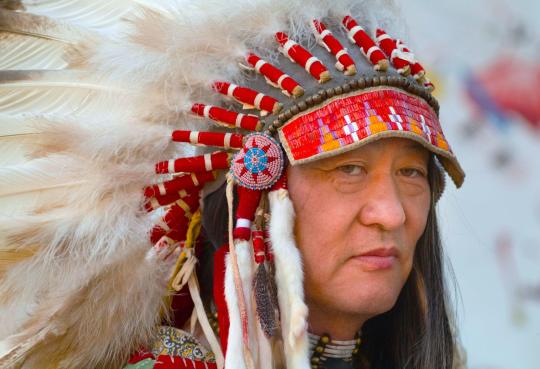
Lo Stato americano della California ha siglato un accordo che permette alla tribù nativa degli Yurok di riappropriarsi della terra di cui è originaria e in cui ha vissuto dal 14° secolo.
La tribù degli Yurok incominciò ad essere perseguitata e allontanata dalle proprie terre alla metà del 1800 in seguito alla corsa all’oro, subì poi una pesante epidemia che decimò la tribù del 75%, massacri e la privazione dei territori in cui viveva per concederle alle industrie di legname e al National Park Service. La terra, che a lungo è stata gestita dalla Save the Redwoods League, riguarda un’area situata nella parte settentrionale dello Stato americano, nei pressi di Orick, da sempre di grande importanza per la comunità di nativi americani che ha un forte legame con la natura e con gli elementi. Il nuovo patto concordato con il National Park Service e il California State Parks permetterà alla tribù di tornare a vivere liberamente nelle proprie zone di origine e di tornarne gestori e protettori.
Dopo diversi anni di sforzi la terra chiamata ‘O Rew avrà strutture dove la comunità nativa potrà vivere in modo tradizionale e luoghi dove potranno essere ricevuti i visitatori, un polo e nuovi itinerari culturali. La tribù indigena Yurok sarà la prima nel Paese a co-gestire un parco nazionale e a contribuire alla conservazione e alla valorizzazione della storia e della cultura tribale americana nel tempo.
___________________
Fonte: Oregon Public Broadcasting; foto di Olena Olesik

VERIFICATO ALLA FONTE | Guarda il protocollo di Fact checking delle notizie di Mezzopieno
BUONE NOTIZIE CAMBIANO IL MONDO | Firma la petizione per avere più informazione positiva in giornali e telegiornali

Se trovi utile il nostro lavoro e credi nel principio del giornalismo costruttivo non-profit | sostieni Mezzopieno
6 notes
·
View notes
Text
Back to the Future: The Animated Series, s01ep13 “Clara's Folks” Review and Commentary
Previous episodes linked HERE
In this episode: Clara and the boys are at risk of being wiped from existence because Marty doesn't know how to say no to a nine-year-old.
And just like that, here we are at the last episode of season 1.
Doc begins his broadcast by carrying in a box and explaining that Clara has been urging him to do some serious cleaning and get rid of all the junk he's gathered over the years. One particular item catches his eye, and he pulls it out to show us, explaining that it was his entry into the 1932 Hilly Valley Junior Science Fair (which would have put him at 10 years old according to his birth year in the animated series).
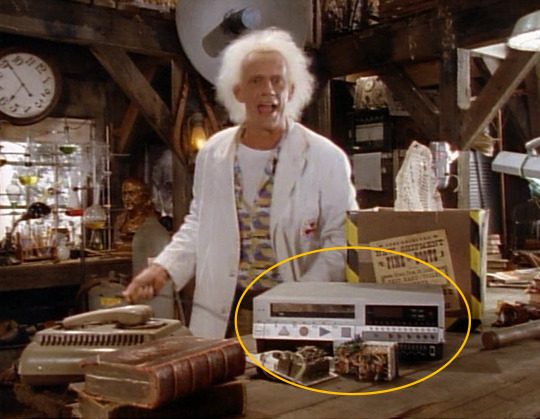
Doc: "A videotape recorder with full 14-day programming capability. It worked perfectly! Too bad there weren't any TV sets around."
So, yeah. That's something Doc did, evidently.
The next thing he finds is one of my favorite parts of these live-action segments. Doc retrieves a videotape from the box and tells us that he was tight on money a few years back and had to resort to selling some of his inventions on the home shopping network. He pops the tape into the VCR, and we get to see a clip of one of his infomercials featuring the new and improved mind-reading helmet he's perfected. It's wonderfully silly.
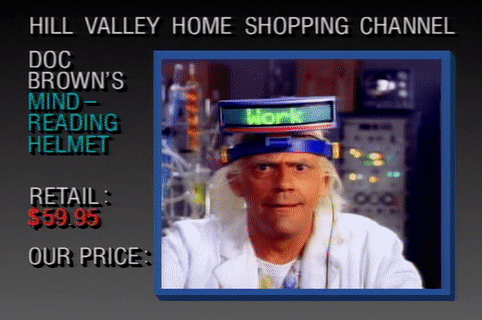
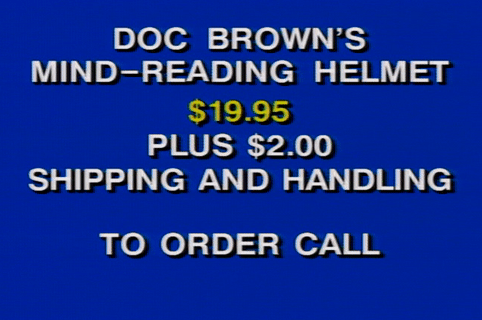
Now I want to know about these financial issues Doc was having? What's the story there? Did he not have any ethical qualms about selling a functioning mind-reading device to the general public? How is such powerful technology being sold for only TWENTY DOLLARS?
The Back to the Future universe it truly a strange place.
Doc also shows us a net, which he says belonged to Clara's father, Daniel. Doc speaks very highly of the man and says the two met back in 1850, five years prior to Clara's birth. This little story then brings us into the cartoon to hear the full story.
While Doc is doing some work on a giant robot, Jules and Verne enter, having just arrived home from school. Jules tells his father he "discovered two new elements in chemistry class," to which Doc replies, "Everyone's entitled to a slow day now and then." Verne, however, had a horrible day and is majorly bummed out about something.
Meanwhile, Marty—who is also at the Brown residence—is playing his guitar that always makes me annoyed to look at because it has these two pathetic little strings on the body and then zero strings going up the neck.
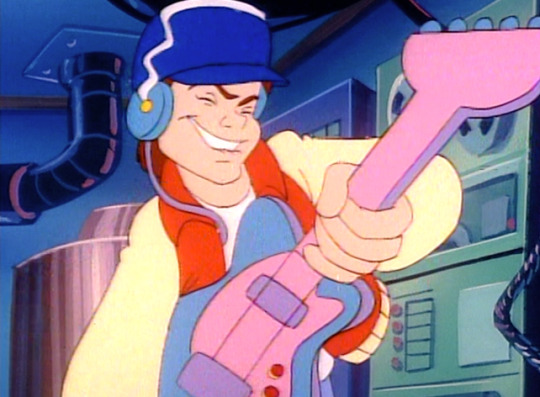
It just. It makes no sense. How is he playing this thing? It makes appearances in multiple episodes, and it never has strings on it. Is this supposed to be some kind of ultra-futuristic guitar that Doc bought him? If so, couldn't they have at least mentioned that in passing so that my mind could be at peace? (It's like they weren't even considering me in this decision at all. Rude.) Is it that terribly difficult to draw a few strings on a cartoon guitar?
Verne storms into the room and tells Marty why his day was so bad. Turns out a classmate, Roland Culver, was bragging about his grandfather's accomplishments, which upset Verne since he never had a chance to know his grandparents or any of the cool things they might have done in life. Marty points out that Verne does know some stories about Clara's parents and directs him to a frame on the wall. It contains a piece of buckboard from Martha and Daniel's wagon, on which their wedding announcement was burned into the wood.
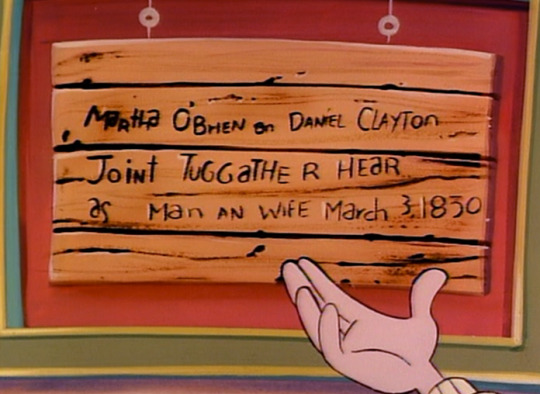
Verne goes on to recite some of the story he's heard a hundred times, informing us that Martha and Daniel met on the Oregon Trail and married that same day.
Wanting to get solid proof of his grandparents' love story, Verne announces that he's going to travel back in time to meet them. I'm glad to say that Marty, who is typically a major enabler of the boys' shenanigans, does warn Verne about the dangers of going back in time and meeting relatives. Verne doesn't see the big deal.
"Don't get your shorts in a wad," he tells Marty. "I'm just gonna take a stinkin' picture." Verne is such a little smart-mouth, and I love the dynamic he has with Marty.
Unfortunately, even the plethora of bad things Marty experienced as a result of messing with the past isn't enough to motivate him to put a stop to Verne's plan. He ends up tagging along with them to 1850.
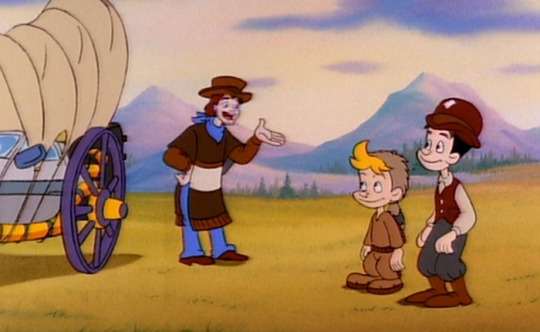
One neat detail in this episode is that we actually get some of the BTTF part III music in the 1850 scenes. In the one pictured above, we hear a few seconds of the music that plays as Marty walks through the town after leaving Seamus' house. And a few seconds later, as the boys are all running from a buffalo stampede, we hear the music that plays when Doc and Marty are attempting to get the horses to pull the DeLorean up to 88mph. It's very cool.
Marty, Jules, and Verne are saved from the stampede by none other than Clara's mother, Martha, who falls in love with Marty the moment she sees him. Marty is not thrilled by this development.

I mean, I don't know, McFly. Maybe you should simply stop being so ruggedly handsome and irresistible to every woman you come across. Have you considered that?
A whole line of wagons show up then, with Clara's father being the last one to arrive. He causes a collision because he's too busy reading a book to pay attention to where he's going, and we're obviously supposed to get the impression that he's a nerd.
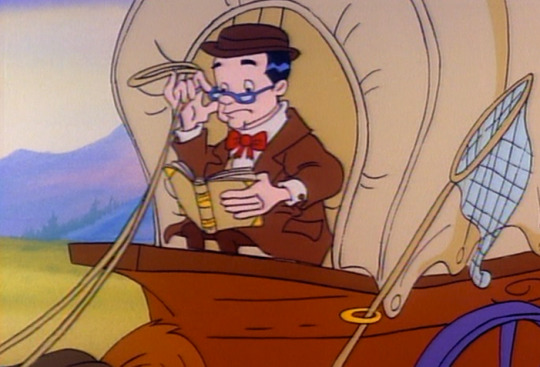
"That's Grandpa? I hope Roland Culver never hears about this," Verne comments, ashamed of his bowtie-wearing, bookworm of a grandfather.
Poor Daniel Clayton.
The group plus Marty and the boys continue along the trail, and Jules laments that he now has to repair the damage done to the DeLorean during the stampede, along with figuring out how to undo the damage to their family tree. The future isn't looking too good for Clara's side of the family. Martha has tied Marty up and is insisting that they get married.
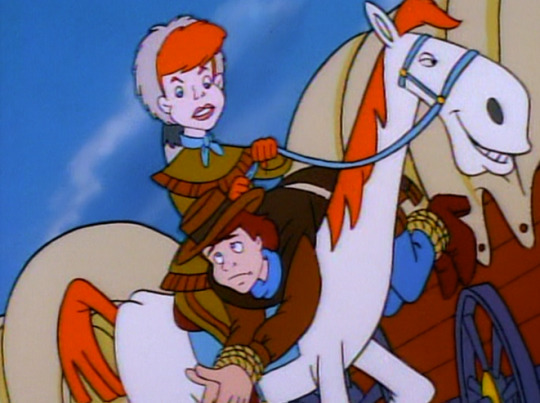
She literally tells him that she won't set him free until he agrees to walk down the aisle with her. And you know what? Clara is a lovely person, but her mother? Not liking her so far.
Marty manages to escape and ends up in Daniel's wagon, where Daniel confesses that he's got a crush on Martha, who doesn't even know he exists. Marty tells Daniel he's going to help him win Martha's affection.
Also, Daniel is a bug enthusiast. His wagon is just filled with jars of bugs. I like him a lot.
As part of his plan to make Daniel more appealing to Martha, Marty helps to give him a makeover of sorts—exchanging his formal clothing for cowboy attire.
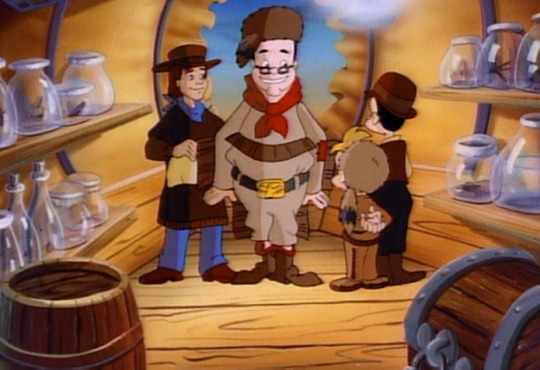
Daniel: "Will this really make the lovely Miss O'Brien notice me?"
Verne: "Yeah, and she'll say, 'Who's the stinkin' geek?'"
VERNE. Verne, you are not helping.
That evening at dinner, Marty urges Daniel to go and talk to Martha, but he's interrupted by none other than "Wild Bill" Tannen, who also has eyes for Martha. He ends up kidnapping her after she witnesses him stealing from their gold.
We then take a scene jump to the present day, where something alarming is happening to Clara. She's beginning to become transparent. Which is, um, not a good sign.
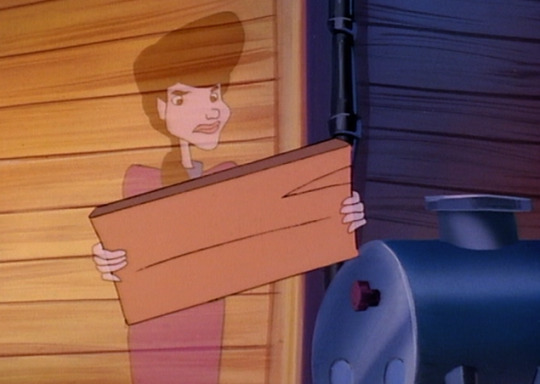
She's oblivious to her current state and very upset that someone has "sanded" the wedding announcement off of the buckboard. Doc assures her that he'll take care of things and instructs her not to look in any mirrors.
After taking the time train to 1850, Doc sets out with Marty, Daniel, and Jules to find Martha (and Verne, who has gone to rescue her on his own). They have trouble trying to track them down, but it's okay because Martha and Verne manage to escape on their own after Wild Bill blinds himself with the flash from Verne's camera. They don't get too much time to relax, though, seeing as a giant bear finds them a moment later.
From over on a nearby cliff, Jules spots his brother and grandmother, who appear seconds away from becoming bear-chow. After taking some time to survey the land, Doc spots a nearby geyser and recognizes that the area they're in will eventually become Yellowstone National Park. Doc yells down for Verne to lay some buffalo hide over the opening of the geyser and sit on it with Martha. When the geyser soon erupts, they're lifted up into the air and out of harm's way. Doc and Daniel then use the covering for a wagon to construct a paraglider and swoop in to catch Marth and Verne once the geyser stops.

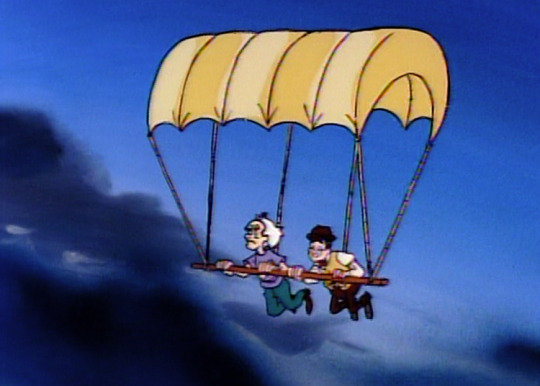
This heroic rescue wins Martha over, and she falls in love with Daniel, setting the timeline right. During their ceremony, Daniel (the bug enthusiast, remember?) catches a butterfly, which he says is a new species. He names it after Martha.
We return to the present day, where Verne is showing the picture of the butterfly to his class as part of his show-and-tell. Roland Culver tells Verne that he has a cool grandfather. End of cartoon.
Back in the garage, we find Doc in a state we don't often see him in: angry.
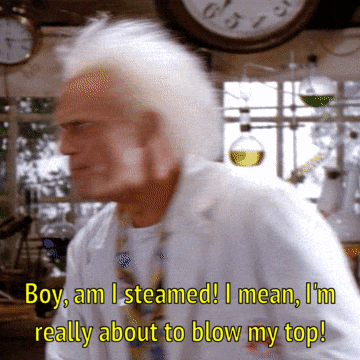
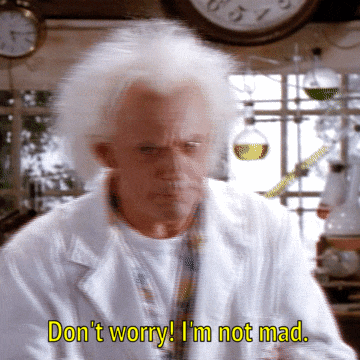
Except, surprise. The big goofball was just pretending. In fact, he was doing "geyser talk," which brings us into a little lesson on how geysers work, along with an experiment to create one using boiling water and a funnel.
After the experiment portion with Bill Nye, we go back to Doc, who is wearing glasses. I'm not sure why. But he looks nice in them. They compliment his face well.
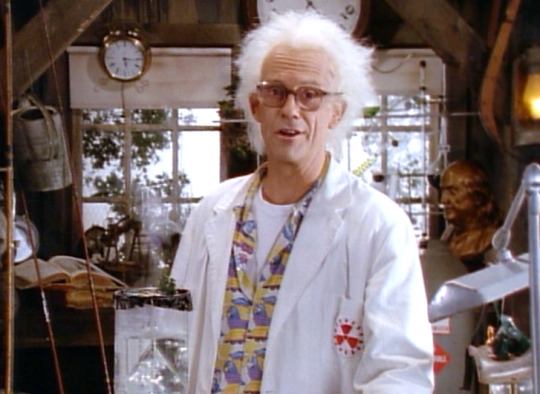
Anyway, that's the end of the episode.
This was a fun one, and I really liked getting to see Clara's parents. You can see where she got the various aspects of her personality from. Strong-headed and tough like her mother, yet sensitive and intelligent like her father. Revisiting season 1 has been nice, and I'm excited to begin season 2, which I've never seen before.
Join me next week for the first episode of season 2, in which Marty lies to Jennifer, then sneaks off with Verne to 1697 so that Verne can get an earring in the Caribbean. ??? Really, Marty??
(I use the Futurepedia summaries to write the "join me next week" parts, btw. Very intrigued by. Whatever is going on in the next episode.)
#back to the future#bttf: the animated series#once again apologizing for the messed up gif formatting for those viewing on a laptop#no clue when tumblr is going to address that bug
19 notes
·
View notes
Text
Featuring Roaring Springs Ranch of Harney and Lake Counties.
Roaring Springs Ranch History
#oregon#eastern oregon#harneycounty#the great pnw#the old west#oregonoutback#pnw#oregon outback#harney county#Roaring Springs Ranch#cowboy#buckaroo#buckaroo lifestyle#cattle#cattle drive#opb#oregon public broadcasting
4 notes
·
View notes
Text
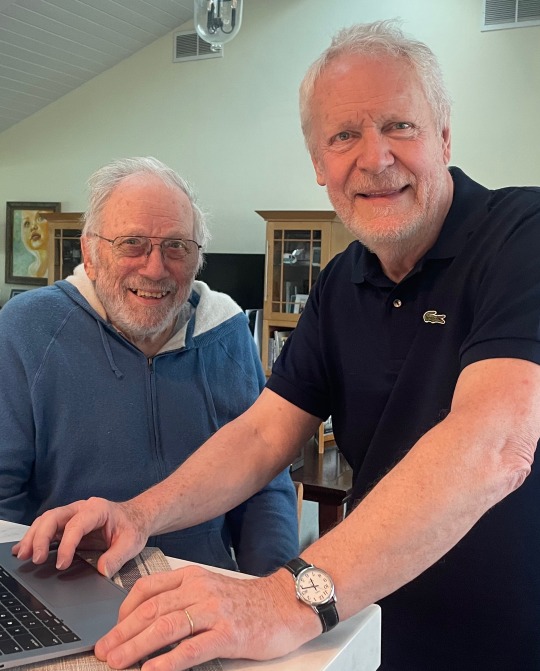
Oregon Judge Tells Family to Kidnap Grandpa
How can a Clackamas County judge decide where an American citizen lives?
Meet 87-year old Dr. Maynard Orme.
Dr. Orme is a well-known character in Portland, Oregon. He was CEO of Oregon Public Broadcasting for over 20 years and was prominent in public television in California before that.
He is a civic leader, was on the board of NPR and PBS, was president of Portland Rotary, and served many causes from jazz radio to historic preservation of railways.
In the 1980’s he produced the documentary “Day After Trinity” about Robert Oppenheimer which was nominated for an Academy Award. At the award ceremony, he wore his High School prom tuxedo with a pale blue ruffled shirt. He is smart, witty, highly regarded and the proud father of two daughters.
If you met him you would love him.
But being 87 years old has its drawbacks and he needs help with managing his finances and, for sure, managing his blood-sugar levels.
Last summer, his two daughters who live a thousand miles from their dad, were concerned about the decline in his health despite his being looked after by an old friend who took on the role of live-in paid caretaker a few years ago. After one too many trips to the ER, the family had enough. One family member, a retired doctor, said, “His lack of care is life-threatening. I think this may be the last time I see Maynard alive”.
The daughters consulted with an Oregon trust attorney to setup his daughters as guardians and Dr. Orme’s caretaker hired a probate elder attorney who insisted on a Guardian/Conservator who would protect his health and his finances.
“We thought we were asking for help and it totally backfired”.
The first recommendation for Conservator turned out to be the woman whose practice was the inspiration for the movie, “I Care A Lot,” that dramatized her career of abuse and corruption in Clackamas County. This should have been a warning. The second suggestion was removed from involvement by the presiding judge for breach of fiduciary duty for offering financial inducement to the paid caretaker, likely in exchange for signing up with him.
The third recommendation turned out to be no better and the judge named her to also serve as the Conservator to work with the newly hired lawyer.
Let’s check on how they are doing.
In the months since the probate court appointed “professional fiduciaries”, Dr. Orme has been saddled with an estimate of $500,000 of expenses and fees. The details of his private Living Trust have been made public, a huge part of his valuable personal collections has gone missing and local police have been told not to investigate. Dr. Orme and his family’s complaints have been deliberately ignored, monthly bills have not been paid, his 401K and bank accounts have been liquidated, his mortgages are in default, his real estate has been claimed by the Conservator, his chosen Trustees have been barred from attending to their duties and responsibilities. Friends and family have been denied contact, Dr. Orme was not allowed to spend the holidays with family, and is only allowed to leave his residential unit with the paid caretaker. Dr. Orme suffered depression, his health declined, and he was neglected.
This is a truly an astonishing catalog of abuse and incompetence that is hard to read and even harder to believe. All of this has been reported by the family to law enforcement, the FBI, and the Adult Protective Services departments in both Oregon and California.
Old but independent, to sick and broke in six months. A new world record.
In every imaginable aspect of his life, Dr. Orme was made substantially worse off than before. The private “probate professionals” are billing Dr. Orme thousands of dollars every month whilst neglecting all of their fiduciary duties and neglecting his health.
All this collusion of those paid to protect Dr. Orme took place while the presiding judge of Clackamas County oversees Dr. Orme’s probate case.
“This is judicially enforced exploitation. A Clackamas County probate racket.”
A few months ago, Colin Evans and Michael Kern, two long-time friends of Dr. Orme heard about some of this and arranged to have lunch with him. When they heard from their friend that he was not allowed to visit his daughters and grandkids over Christmas, they supported his wish to leave town and travel to stay with his family in Pacific Palisades, California. He is now safe, happy and with his family, but penniless; prevented from even accessing his Oregon home or his resources from a lifetime of work, he now depends on his family and friends for his care and wellbeing.
Despite all this depredation, his health and mental faculties have recovered tremendously with help from doctors, family and caregivers. He remains ever cheerful and states repeatedly to everyone including the judge, that he wishes to stay in Pacific Palisades. He has further indicated that he is afraid to return to Oregon, into the hands of paid caretakers and professionals who have medically neglected and exploited him, and whom he certainly no longer trusts.
One old friend who talked to him after his move to Pacific Palisades said, “I was worried he was failing before. He was foggy but I just talked to him and now he’s BACK”.
Shameful Probate Horror Story Continues.
Subsequent to his move to Pacific Palisades and despite his repeated statements that he is happy and healthy there, the professionals in Oregon in charge of his wellbeing have engaged in pervasive bullying and harassment in order to force his return to Clackamas County into their clutches. They downplay their bullying, asserting they have a higher status and authority than the family to decide Dr. Orme’s fate.
His friends and family have been visited by LAPD and Protective Services departments multiple times in Pacific Palisades; the FBI even showed up with accusations that he had been kidnapped and held against his will and without his medications. All of these people found Dr. Orme in great spirits and in great health, with all his required medications, and being looked after with regular visits from two caregivers. They all reported that he is happy and surrounded by joy, grandkids, pets, love, and care.
Dr. Orme vested a great deal of trust in his Oregon caretaker, and he voluntarily agreed to the professional fiduciary and her retained legal counsel. He does not want to believe that they have conspired to manipulate and defraud him. Yet here we are. From his perspective, all the evidence points in that direction.
Despite all this, the Conservator has persuaded the Probate Court judge to issue an order for Dr. Orme to return to Clackamas County and to hold his daughter, Jennifer Erwin, in Contempt of Court with a $18,000 fine and additional $500 per day fine until she returns him to the judge.
Maynard Orme’s only crime is growing old.
Remember … Dr. Orme has no medical opinion declaring him incompetent, there are no court-ordered restrictions on his travel or association, none of his medications have been defined as life-threatening, and he has a well-designed Living Trust for his property that allows him to decide how his assets are used. Yet he is being treated as if none of these were true.
All of us should be terrified by this. We all aspire to be this well organized so that our autumn years are comfortable and stress free; that our children are left with clear instructions.
Step back a second to realize how repugnant this court order is. The Probate Court has no power to arrest or extradite Dr. Orme, so the judge has chosen to solely punish Ms. Erwin until SHE returns him to the Clackamas County Courthouse. It’s a Solomon’s Choice. If Dr Orme is forced to return to Oregon, his will, well-being, and civil rights are sacrificed. His daughter may be subject to criminal charges for abuse, exploitation, and kidnapping. If Dr. Orme remains in California, as he is entitled to do, his daughter is held in Contempt and the court can order fines, attorney fees, compensation for damages, and even confinement to jail.
Indeed this judge has the power to arrest Jennifer Erwin should she come to Oregon and not give up her father into the hands of predatory professionals who see him as nothing more than a revenue stream. This is an impossible choice for Dr. Orme’s daughter that amounts to judicial blackmail and over-reach from the bench and an abuse of the judicial process.
The family is traumatized but saddled up and into the fight.
Rest assured that this is not the end of this story. Dr. Orme is lucky enough to have access to expert legal counsel, and a network of friends ready to help. One of his daughters has made a career of crafting true crime stories for film and television and works tirelessly with the FBI to support anti-human trafficking efforts. They will fight back against a predatory system and pursue any and all appropriate legal recourse.
The judge is up for re-election in May of 2024 and the professionals shall be reported.
But the message for anyone getting older or anyone looking after elder relatives - and that means everyone - is that they should avoid at all costs engaging with professional guardians, conservators, and especially their bullying lawyers in any part of America.
Kristin Booth Glen, a former New York judge who helped craft oversight in that state said, “Keeping people out of guardianship in the first place is the single most important thing to do, because once you’re in it, it’s the toilet you get flushed down.”
Photos: Above: Maynard and me reading this article. Below: Video o Maynard fact checking, Maynard and Jennifer at his grandkid's baseball game, Maynard escaping Oregon with Jennifer, Maynard showing me around his friend's collection of automata, Maynard with one of the engines at his Oregon Rail Heritage Foundation.
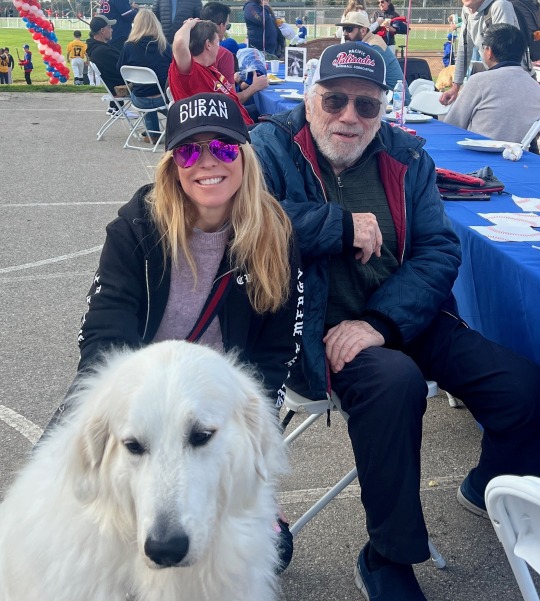

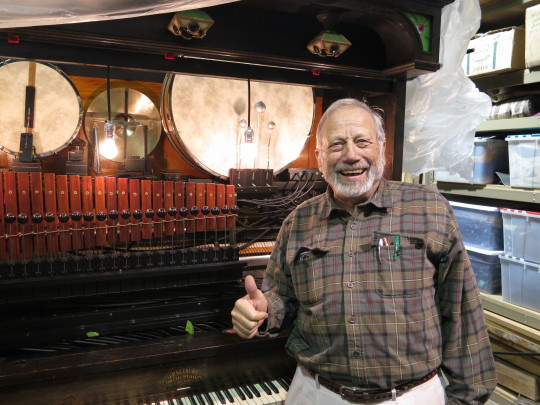
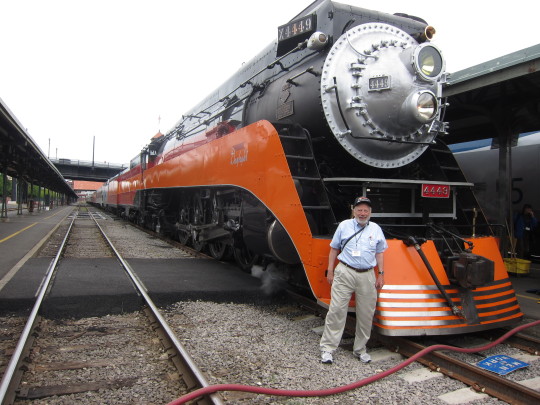
2 notes
·
View notes
Text
Childcare Deserts
Childcare is a HUGE issue- each county in Oregon has been named a “childcare desert” (OPB, 2021) This means that for every childcare slot available in the county, there are 3 or more children that can occupy that slot. This makes navigating the childcare system extremely difficult for families.
You may wonder whether you will be able to afford to stay home with your children. If this answer is no, you will have to decide if it is worth paying $1000+ per month, per child, to work full-time. If this answer ends up being no, then there is a pretty difficult decision to make. If childcare ends up being the way to go, then the next task is figuring out where you can send your child.
Depending on where you live, there may not be very many childcare centers to choose from. Here in Oregon City, there are about 26 childcare centers serving children ages 0-5, if you are consulting Google. Finding a center with an open slot is difficult, and most of the time, families will be on a waitlist for an opening. I am just getting calls now for a waitlist my family joined in August 2022.
This issue is causing parents to leave the workforce to take care of their young children until they reach the age where they can attend public school. Even then, families are still relying on after-school care to make up for a short school day in comparison to a regular workday. We know that life is hard – things are becoming much more expensive: housing, transportation, even groceries. It’s becoming much less feasible for families to have a parent leave the workforce, especially when there are more mouths to feed and bodies to clothe than before.
References:
Oregon 'child-care deserts" still prevalent. Oregon Public Broadcasting. (2021, June 8). https://www.opb.org/article/2021/06/08/think-out-loud-child-care-deserts/
2 notes
·
View notes
Text
[Image ID:
First photo:
Photograph of Karuk mother carrying their child on their back in a traditional willow basket. They were photographed in the Portland Art Museum (PAM) in a tan coloured room with framed art pieces sitting in a line across the wall. A black couch set in the center of the room is captured in the left corner of the photo.
Second photo:
Below the photo of the woman and her baby is a post written by revolution rising pdx. It says; "Portland art museum kicked out and Indiginous mother & baby for wearing her baby in a traditional baby carrier (made by her mother who is a master basket weaver). The art museum said that the basket was a danger to the art & the museum and sited a no backpack rule."
Third photo:
Below that post is more text written by someone who is not identified in this photo. I am assuming it's written by the person who was kicked out based on what was written. It says; "The Portland Art Museum - where being Indigenous is cool as long [as] you are part of the exhibit and not actually practicing your culture. According to the nice white lady, [blacked out text] 's baby basket is a danger to the art and also my baby. "Backpacks" aren't allowed by museum policy. "Cool item though" she says as we are shown the door. "Kill the Indian Save The Man was also a policy", I point out. "You need to cool down - take a deep breath" retorts the lady. The irony: we were at an Indiginous art exhibit. Racism is alive and well in these walls."
End ID]
Article by Oregon Public Broadcasting (OPB):
Portland Art Museum changes policy after Karuk mother speaks out
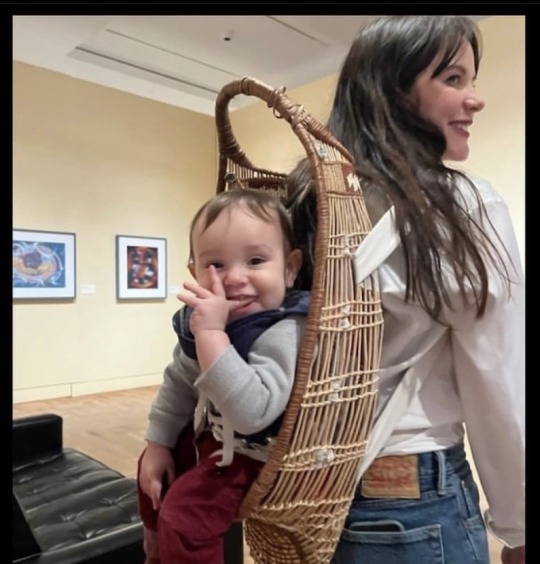

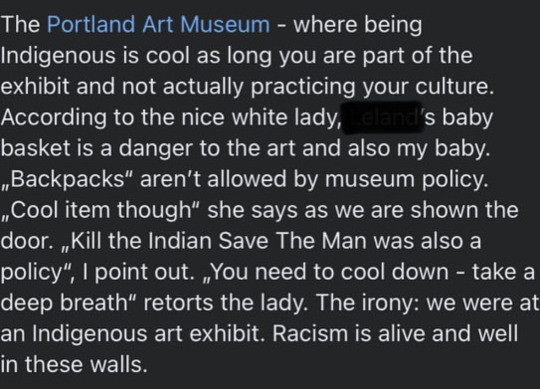
19K notes
·
View notes
Text
How the loss of public media funding could affect America’s underserved communities
We’re at one of over 1,500 local public media stations in the country, according to the Corporation for Public Broadcasting. CPB is the entity that distributes nearly all funds to local television and radio stations.
If you listen to this show on your local station, you likely know that its funding is under threat. Earlier this month, the House voted to rescind $1.1 billion in funding for NPR and PBS over the next two fiscal years.
For a station like WAMU, this money accounts for roughly 1 percent of funding. But for other stations, that percentage is much higher. Native Public Media stations receive 53 percent of their funding from the government. The NPR stations that make up the African American Public Radio Consortium receive an average of 26 percent of funding from the government.
Stations like Oregon’s KCUW, New Mexico’s KSNI, and Tennessee’s West TN PBS will be among the hardest hit should Congress claw back funding. That’s according to Current, a trade journal covering public broadcasting.
We discuss what funding cuts could mean for the future of public service journalism and local news.
Guests
David Gordon
executive director, KEET
Kelly McBride
public editor, NPR; chair, Craig Newmark Center for Ethics and Leadership at The Poynter Institute
Karen Rundlet
CEO, Institute for Nonprofit News
Ed Ulman
CEO and president, Alaska Public Media
We depend on your support...Donate
Transcript collapse
DISCLAIMER
Transcripts of WAMU programs are available for personal use. Transcripts are provided "As Is" without warranties of any kind, either express or implied. WAMU does not warrant that the transcript is error-free. For all WAMU programs, the broadcast audio should be considered the authoritative version. Transcripts are owned by WAMU 88.5 FM American University Radio and are protected by laws in both the United States and international law. You may not sell or modify transcripts or reproduce, display, distribute, or otherwise use the transcript, in whole or in part, in any way for any public or commercial purpose without the express written permission of WAMU. All requests for uses beyond personal and noncommercial use should be referred to (202) 885-1200.
Speaker: 000:00:07This is one a. I'm Jen White. We know there's a lot happening globally. In retaliation for US strikes on three of its key nuclear facilities, Iran launched missiles toward US bases in Qatar and Iraq on Monday. There were no casualties, and the move was considered largely symbolic. By Monday night, president Trump said Israel and Iran had reached a ceasefire deal to end what he called the twelve day war. But today, Trump accused both Iran and Israel of violating the ceasefire. I will continue to cover that news as it unfolds. But today, we wanna focus on stations like ours that bring you the news. This program, one a, is produced by Washington DC's local NPR station, WAMU. We're one of over 1,500 public media stations in the country according to the Corporation for Public Broadcasting. CPB is the entity that distributes nearly all federal funds to local television and radio stations. And if you're hearing today's show on your local station, you probably know that this funding is under threat.
Speaker: 100:01:07I am a journalism student. I'm about to start my last year of college, and it really scares me to see journalism under attack as I'm about to enter the industry. Public media is really important to me. I rely on my local NPR station, WBEZ Chicago, for so much. And I think if public media were to be successfully defunded by the government, there's such a great risk at the only access to journalism for the public being corporately run and billionaire funded. So I think in the interest of an informed public, public media needs to survive.
Speaker: 000:01:50Thanks for that message. Earlier this month, the house voted to take back $1,100,000,000 in funding to NPR and PBS for the next two fiscal years. This rescission packet awaits a final vote in the senate. For a station like ours, WAMU, this money accounts for roughly 4% of our funding. But for others, that percentage is much higher. Native public media stations, a public broadcasting organization that provides media services to native Americans, receive over 50% of their funding from the government. The stations that make up the African American Public Radio Consortium receive an average of 26% of their funding from federal dollars. That's twice the overall average. Stations like Oregon's KCUW, New Mexico's KSNI, and West Tennessee's PBS would also be among the hardest hit by these cuts. That's according to Current, a trade journal covering public broadcasting. Today, we discuss what this means for the future of public service journalism and local news, but first, we hear from one of the smaller stations that will be most affected by a loss of federal funding. David Gordon is the executive director of KEAT. That's a PBS member station in Eureka, California in the northern part of the state. David, it's great to have you. Thanks for having me. And we wanna hear from you. What's your local NPR or PBS station where you live, and what role does it play in your community? If you were to lose this news source, where would you get your news instead? Email us at [email protected]. And we reached out to PBS, NPR, and CBB for this conversation. We'll read some of those statements later. David Keat, your television station, is one of the smallest PBS stations in the country. Tell us a bit about it.
Speaker: 200:03:25We are behind, as we say, the Redwood curtain, excuse me, in, Northeastern California. And, it is, something that you have to really plan for to get to this area. It's not easily accessible. We are the sole PBS provider for, about 160,000 residents stretched throughout Humboldt and in Del Norte Counties. And, the access to broadband and other types of infrastructure is is lacking, shall we say, in this part of the country. So, this PBS station with its ability to broadcast free over the air programming, is more important perhaps in this area of the country than it might be in some some other areas.
Speaker: 000:04:13How much is your annual operating budget, and what portion of that budget consists of donations from listen from from watchers?
Speaker: 200:04:21Yeah. It's a little it's a little under, $2,000,000 a year, and about 48% of our operating money comes from the federal government at this point. That can fluctuate a little bit based on the complicated funding formulas that, you have to go through every year to find out exactly what the grant will be. But this coming year, that's that's what it is, right right around 48% of our money, our budget. Now you recently told Politico
Speaker: 000:04:47that should Congress' rescission package pass as is, it would mean, and I'll quote you here, almost immediate disappearance of almost half our operating budget. How do you use the portion of your operating budget that comes from federal funds?
Speaker: 200:05:02Well, a a good part of it goes to paying for the, programming service and and other services that we receive from PBS. When PBS says that they get a small portion of money directly from the federal government, that's right. But there is a lot of money that passes through the member stations like us in order to pay the dues to to have access to the programming. So the heavy reliance on PBS programming that people have come to have, through Keat, that that
Speaker: 000:05:35would most likely change. Yeah. And and I think this is a a good moment just to clarify for people that local stations typically buy programming, including from PBS and NPR to air on their stations. So when you're listening to Morning Edition or All Things Considered, when you're listening to one a, that's often paid for with federal funds stations receive through CPB. David, you also told Politico that, quote, assuming Keith would continue, it would be in a very, very different form than it is in right now. What would change?
Speaker: 200:06:11A a a lot, including, the type of programming, the amount of programming, the number of staff people that we would be able to retain. All of that would change. We've been running the numbers, and we've we've set up for, you know, business as usual. And then we went to the opposite end and said, okay. What's the what's the worst possible scenario here, assuming we lose all federal funding? And it's it's it's pretty grim. I don't really wanna say this is what would happen, but you're almost certainly looking at a reduction in staff. You're almost certainly looking at a reduction in the amount of PBS programming because, at this point, I'm not quite sure exactly how the distribution of PBS programming would continue to get to us, well, how we would be able to access that. There are other nonprofit and public television production houses and and stations that do provide programming, and I and I'm sure that we could reach some kind of agreement with them to continue to have some kind of programming noncommercial programming service on the air. But it's at this point, doesn't look like it's going to necessarily be Masterpiece or PBS NewsHour even though PBS has said, you know, that they remain committed to producing and distributing this programming even in the face of the rescission. I'm not quite sure what that would look like, how it would happen, and to what extent programming would be available. But, definitely, it's it would look a lot different if we were to lose the federal funding. What would your community lose, David,
Speaker: 000:07:49in your view, if your station either changed dramatically or, in a worst case scenario, shut down entirely?
Speaker: 200:07:59Well, the the local programming that we're, able to do, we do have a weekly, news and information, roundup show that we do just talking about issues that are of importance to people in this area. We do that once a week. We also produce, documentaries from time to time that address issues that affect this continue to affect this area, one on, addiction and and homelessness and the, other on suicide prevention, which are pretty big problems in this area of the country. Those kinds of things, I I'm doubtful we would be able to continue to produce that, especially a a weekly live, news program because you have to have the staff to be able to produce that. We also provide four other programming services in addition to our main channel. We have, the PBS Kids Network. We have FNX, which is the First Nations Experience, a native, owned and and and produced channel. And then there's PBS Create and World. So there are five total commercial free educational channels that are available over the air at no extra cost, no subscription fee, none of that. That would that would be affected if if not lost. And, the emergency services that we're able to, get out over the air as part of the EAS, network, we reach into some places that, it's difficult to get a signal into, especially, broadband. So the free over the air service becomes even that much more important, and that could be really affected if not lost. What are you hearing from your community? We love PBS. We can't really understand why anybody would want to take away PBS from this community. I mean, it's it's it's the same thing I'm sure that stations are hearing all over the country. One thing I do see all of the time, because I'm I'm follicly challenged, and so I wear a cap all the time. And when I'm out, I sometimes most of the time wear a PBS cap. And people say, PBS. I love PBS. And then they tell me their story about how PBS affected them as a kid, how now their kids and even their grandkids are growing up on PBS. And I haven't yet a person met a person yet who sees that that PBS cap and says, you guys really don't deserve to be here. I've never heard that. So, our community feels
Speaker: 000:10:32just like everybody else's pretty much. PBS is an important lifeline, and they don't wanna lose it. And just a quick sentence or two, David, if you could say anything to congress about the work you do, what would you tell them?
Speaker: 200:10:45It's essential to serving this remote rural area. It's some people's only connection to news, information, educational programming. There is no other way for them to get it. We need to preserve that.
Speaker: 000:10:59That's David Gordon. He's the executive director of Keat PBS in Eureka, California. David, thanks for joining us. We appreciate it. Thanks for having me. Up next, what could cuts to federal funding mean for the future of public service journalism and local news more broadly? And we wanna hear about your local NPR or PBS station. Email us at [email protected]. This is one a. I'm Jen White. We're discussing what cuts to federal funding for public broadcasting services like NPR and PBS could mean for the future of public service journalism and local news. Let's add a few new voices to the conversation. Kelly McBride is NPR's public editor. She's also the chair of the Craig Newmark Center for Ethics and Leadership at the Poynter Institute. Kelly, it's great to have you back. Hello. Nice to be here. Also with us is Karen Runlett. She's the CEO and director of the Institute for Nonprofit News. They have about 30 public media outlets as members. Karen, welcome back. Thank you so much for having us. And Ed Ullman joins us. He's the CEO and president of Alaska Public Media. Ed, welcome to the program. Thank you. Glad to be here. And we're also hearing from you.
Speaker: 600:12:45My local station is WUSF in Tampa, Florida. I also listen to WMNF in Saint Petersburg and Tampa, Florida. I don't know what I would do without my local NPR stations. I have been listening to NPR since early nineteen eighties. I went to school for broadcasting in Oswego, New York. I even, did some paid work and an internship at WRVO in, Oswego, Syracuse, New York. So it's been a part of my life since I was a young person,
Speaker: 000:13:25and I depend on it. You can add your voice to the conversation. What's your local NPR or PBS station where you live? What role does it play in your community? And if you work in public media, how much does your station rely on federal funding, and how would cuts impact that work? Email us at [email protected]. NPR has released several statements about the house vote to claw back federal funding to public media. Here's part of one of those statements from the organization's CEO, Katherine Maher. Quote, the Public Broadcasting Act does guarantee that every eligible local noncommercial public media station can receive support from CPB. Therefore, this clawback would directly and immediately impact local public radio stations. This includes NPR member organizations responsible for more than 1,000 station signals in our network as well as hundreds of other public media organizations. Enacting this rescission will remove crucial funding for station activities causing immediate budget shortfalls. This would result in cancellation of beloved local and national programming, a reduction in local news coverage and newsroom jobs, a severe curtailing, if not elimination, of public radio music stations who depend on CPB to negotiate music licenses, reduction in service areas for rural and remote communities, as well as forcing dozens of local stations to shutter operations. You can read the rest of that station that statement rather on NPR's website, npr.org. Kelli, let's start with why the federal government provides funding for public media at all. What's the story behind that?
Speaker: 300:14:55Well, it it's a long one, and it's tied very closely to democracy. Most established democracies in the world have a form of public media, and ours was established in the late 1960s because as commercial entities took over the broadcast airwaves, television and radio, There was a concern that they were not acting in the public's interest that the content that they were creating was going to actually harm the public or at the very least Was not going to advance the public's interest their need for information about how their government worked about what was going on in their communities about what they needed to get smarter about the world and so Really, public media was created to backstop a vast commercial system as sort of a Information provider of last resort at least you would have public media if all the commercial stations provided absolute junk and, there was nothing of value to you as a news consumer anymore.
Speaker: 000:16:03Ed, we do what is sometimes called public service journalism. What does it mean, and how is it different from other kinds of journalism?
Speaker: 500:16:11It's about filling gaps. It's about going and capturing the stories, working with local community to ensure that we're telling those stories fairly and accurately, in places where commercial media just won't explore because it's not profitable.
Speaker: 000:16:27Karen, how does that overlap with the role of local journalism more broadly?
Speaker: 400:16:33Well, public service journalism is covering topics that are focused on community society. Right? Local journalism is is geography, towns, cities, neighborhoods, rural communities. So if at the national level, say, the focus is on education, locally, it's gonna be schools, teachers, families, and the school board. At the national level, maybe it's the economy. But locally, people want to know about jobs and housing costs, the price of food. So, you know, one of, our members at the Institute of Nonprofit News is Jacksonville Today. So today, they reported on a landlord accused of illegally charging military tenant tenants fees after they receive relocation orders. So that landlord is being sued. That's a local housing story. So that's basically the difference.
Speaker: 000:17:18We got this email from Nicholas who says WVXU is my local station in Cincinnati, Ohio. They have great programming. My mother was in journalism before going into finance. Public journalism is so important. I've been listening to it since I was in high school. Don't forget that many parts of The US have had newspapers fail, and there are news deserts across the country. Public radio or public TV is what many can access who have an antenna. And, Kelly, place this conversation in the context of what we've seen happening in local journalism across the country, loss of newspapers, shuttering of local newsrooms. How has public radio, public television stepped in to try to, at least to some degree, fill those gaps?
Speaker: 300:17:59Yeah. I mean, on the local level, we have seen the number of journalists and the number of journalism outlets decline dramatically. So when public media was first created, the the the idea was is that it would really be helpful in places like Alaska, where it was just so sparse that you weren't gonna see a lot of commercial media. But what we've seen in the last fifteen years is the number of commercial media outlets in major markets dwindle significantly. So most newspapers have a third or a quarter of the number of journalists that they used to have, even in major, major markets. And in really small markets, it might be a tenth of the number of journalists that they have. Television stations might have the same number of journalists, but they're programming for twice the number of minutes, so it's effectively a cut. And and and television stations traditionally don't cover a lot of the deep issues that are significant to community because the production costs are so high. And so locally, that's where we've really seen a need, and public media, public radio, and public television stations are stepping in. Many local public radio stations have expanded their staff, are are aiming to be the news of record and the daily essential news source. Many public television stations are doing the type of public affairs programming that becomes really accountability journalism. And so the need is great, and public media is better poised to step in and fill this increasing gap than any other form of journalism right now.
Speaker: 000:19:47Oh, we heard from Marlene who emails, I listen to our local station KUAF all the time listening to it right now for your program. Not only is it a way to get the best NPR news programs like morning edition and all things considered and all the other great programs, but it's the best coverage of local news and events. I don't know what we'd do if we lost it. There is no other station that compares to it. It is the only station that is balanced in its reporting. We also heard from Steve who writes, I'm the general manager of KTXK in Northeast Texas. We're a rural public radio station and receive 38% of our budget from the corporation for public broadcasting. Without that funding, we will not be able to continue with most of our NPR programming. Unfortunately, one of those programs would include one a. It is critical that we find a way to support public radio. If we do not exist, there's no local programming or news in this community. And, of course, the emergency broadcast system is something that's very critical for this community. Ed, I think I I wanna pause here briefly to just explain to our audience first the relationship between the CPB funding and a program like one a. Now our station, where we're produced, WAMU, it's a local station, gets about 4% of its budget from the the Corporation for Public Broadcasting. 10% of the station's operating budget comes from licensing fees for one a. So if stations lose the money to pay for NPR programs like one a, like morning edition, like All Things Considered, it has a compounding effect on a station like ours because it's a loss of income from the loss of the the licensing fees for the show alongside that loss of CPB funding. So you estimated that more than one third of the public media stations in Alaska would be forced to shut down entirely within three to six months should congress pull this funding. What would that do to the state's news ecosystem?
Speaker: 500:21:38Oh, it would be the it's it's gonna be devastating. We, with our 26 partner radio stations and TV stations across the state. First, I should level set for folks that don't know or familiar with Alaska. There are 27 public media outlet outlets covering a vast geographic region from the North Slope all the way down to the Aleutian Islands in the Southeast. We have four television stations and then, 27 of those are radio stations. Four of us are joint licensees. Why does that matter? Because we only can do what we can do with the national local partnership with NPR and PBS and CPB. They're essential to what we do. We bring in that national content, and then we have enough on the schedule to then fill in all the local news we do. And we operate the largest statewide newsroom in Alaska right now. The only statewide newsroom with reporters embedded in all of these communities working for those local radio stations. To lose a third of those stations means that we lose a large rural audience for our local content and the national content and one a. And, we lose, the ability to capture those stories with journalists who live in those regions and serve those communities and know those folks who know and understand, everything we've talked about so far about what only journalists can do and capturing those stories. And and then we lose home bases when we send out our PBS kids ready to learn, staff to go out and work with children and families with Molly and Denali and all the other incredible PBS children's content. We lose those home bases where we work from to do that work. So it's going to have a devastating impact. And we haven't even talked about the public safety concerns and and what will be lost in that regard because most of our public radio stations in rural Alaska are sole source broadcasters. They're the only broadcasters in the community they serve.
Speaker: 000:23:39We're speaking to CEO and president of Alaska Public Media, Ed Ullman, also with us, the director of the Institute for Nonprofit News, Karen Runlett, and NPR's public editor, Kelly McBride. I'm Jen White. You're listening to one a. Oh, Karen, many of the stations that will suffer most as we're hearing are located in rural or more remote parts of the country. According to Current, again, that's a trade journal covering public broadcasting, native public media stations receive 53% of their funding from the government, and the NPR stations that make up the African American Public Radio Consortium receive an average of 26% of funding from the government. So why is it important to understand the nuances of who these rural communities are are are how these rural communities are served in in this discussion?
Speaker: 400:24:27I think what's important to note is that public media, it's free. You know, it's for everybody, so it's really equitable. And if you're one of the only sources in the community, there's just basic information that will not flow through the community. And some of that is just, you know, information about a festival or a fair or something lovely that connects the community where people gather. Some of that is about what lawmakers are doing, about schools, but some of it also is public safety. You know, this morning, for instance, I I spoke to, leadership from WFAE WFAE in Charlotte, and they were talking about a million dollar shortfall this year because of some of these threats and other things that are happening, economically. And, you know, they were the ones that pumped information into com into the communities, you know, when it comes to hurricanes, when it comes to you know, this happened as well for, some of our, our newsrooms, in California. When the California wildfires, they're giving basic information to tell people how to exit an area where fires are approaching. In rural communities, there are just fewer sources, and this information is vital for public safety.
Speaker: 000:25:52Let's go back to our voice mailbox.
Speaker: 700:25:54Hi. This is Kendra from Florida. And, you know, I really do lament the loss of funding for public radio, especially in, like you say, Native American communities. But the only people you have to blame for that are the people at places like NPR. The programming is terrible. It's partisan. It's hacky. It's you know? People have been warning you guys for a very long time that you need to be more balanced in your coverage, and you have steadfastly refused.
Speaker: 100:26:21Hi. This is Erin Tembriss. I'm calling from Fort Wayne, Indiana. I'm a secondary education English teacher, at a local high school, and I frequently use NPR stories and podcasts in my classroom, to provide students with one angle of a story, one, angle of a position,
Speaker: 000:26:40and I often use NPR as an example of unbiased news. Kendra, Erin, thanks for those messages. So different perspectives there, Kelly, but president Trump says NPR and PBS are biased against conservative perspectives. That's something he's using to try to justify clawing back federal funding. On what basis is he making those accusations?
Speaker: 300:27:00Well, he he and and other critics are generally singling out individual stories that seem to be focused on very small communities, trans communities, minority communities, immigrants. When I my job at NPR is to look at the entire journalism product, and and what I find in general is that they may they may lack a small amount of, geographic diversity, right, because they are located on the East Coast and on the West Coast, the network is is meant to compensate for that, and they are working very hard to bring more and more content in from the network. And and so, to the extent that there is a bias, I don't think it is a political bias. I think it is a geographic bias, and I think that NPR has worked very hard to, to compensate for that. And I think it's unfair to look at to cherry pick small stories or individual stories, especially when you go back ten, twelve, fifteen years. When you look at the amount of content that NPR puts out in a given week, it's it's something like 1,800 individual stories, individual topics. So that really, if you're gonna look at bias, you really have to look at a representative sample. And when I do that, I do not find bias the way that the president and other critics find.
Speaker: 000:28:41We're discussing what cuts to federal funding for public broadcasting could mean for the future of public service journalism and local news. We're here with NPR's public editor, Kelly McBride, the CEO and director of the Institute for Nonprofit News, Karen Runlett, and CEO and president of Alaska Public Media, Ed Ullman. And we're hearing from you. Jenna says living rurally means limited connectivity. NPR is the only way I get any current event news, and I listen to three different stations that statically come in in different parts from the count from the county. In addition with the increasing safety risk the Internet poses to small kids, I feel safe letting them watch the PBS kids app and PBS kids game app. I grew up on Wishbone and Magic School Bus, and it's important to me that my kids grow up with not only entertaining, but educational programs too. We'll be right back. Now back to proposed cuts to federal funding for a public broadcasting service like NPR and PBS and what those cuts could mean for the future of public service journalism and local news. We're here with Kelly McBride. She's NPR's public editor. She's also the chair of the Craig Newmark Center for Ethics and Leadership at the Poynter Institute. Also with us is Karen Runlett. She's the CEO and director of the Institute for Nonprofit News. They have about 30 public media outlets as members. And Ed Ullman, he's the CEO and president of Alaska Public Media. Let's go back to our inbox.
Speaker: 800:30:25Hi. My name is Cece, and I live in Southeastern Utah. But I grew up in Southern California where NPR and public radio and community television were incredibly important to me and to my family. Here in Southeastern Utah, we have even fewer, options for coverage. We do have an NPR station we can hear that's based out of Salt Lake City. That's k u e r. It would be devastating to lose that. And then we have KUVMU, our local community radio station here with a reduction in staffing at our local newspapers and a lack of national attention.
Speaker: 000:31:00It would be devastating for us culturally, politically, and socially to lose this. I really hope that funding is not cut. Cece, thanks for that message. Now, Karen, your organization includes around 30 public media members, and it recently moderated a conversation about the state of federal funding for public media. What came up during that conversation, and what are you hearing from your members about their biggest concerns right now?
Speaker: 400:31:24We yes. We host an annual conference, the Institute for Nonprofit News. We call it INN days. And, you know, we talked a lot about the stations that would be hit hardest by the loss of federal funding. And, again, those stations serve rural and tribal communities, and a handful of them are housed at HBCUs, historically black colleges and universities like Jackson State University in Mississippi. And we talked about actually how many of our members that are not public media outlets, that run newsletters and that operate, different podcasts, how they actually collaborate with so many of the public media outlets. There are a number of collaborations that are going on. I can speak about, one in Kansas City, KCUR, and The Beacon, which is one of our members, and Kansas City PBS. That's an editorial collaboration. In addition to that, we actually spoke about some mergers and acquisitions that have happened. You know, Public Media has, acquired some smaller digital properties to strengthen their reach, to reach more people. We talked about the opportunities around collaborations. If this this funding gets cut? That was a big part of the conversation, how INN other INN members we have a large rural news network, organizations like Athens County Independent or Benito Link, and how they can partner with public media outlets.
Speaker: 000:32:57I think this is an important time to talk about the funding model for public media because, Ed, the the proposition for nonprofit media is different than the proposition for for profit media. We're not trying to rake in tons of money. The goal is not to have a huge balance sheet. It's to have money to pay for the work that we do that serves our communities. Talk a little bit about how that nonprofit piece of our, our makeup, of our of how we're we're, we're structured. Because you hear a lot of people nowadays talking about, well, if it's if it's worthwhile, people will just pay for it. You know? If if people wanna keep it, they'll make sure that it's there, they'll pay for it. And I think there are a lot of newspapers that would raise their hand and say, actually, we have we have some news for you. But talk about the nonprofit piece of that and and how it fits into this discussion.
Speaker: 500:33:53Jen, this is such an important point, and there's a lot of nuance there. But it's about this public private partnership and the most efficient use of a taxpayer dollar. And CPB in particular, 70% of the appropriation goes directly to stations. There's a misnomer that this money goes primarily to PBS or NPR. That's not the case. Goes directly to stations, and stations exercise local choice about the content they bring to their communities and they respond to community needs. That's part of that nonprofit piece. But the broadcast infrastructure and the interconnection and how we move audio content and video content across the entire nation, not only to get NPR and PBS directly to stations so that we can air it, but also us moving our content to NPR and to PBS and to other distributors across the country relies on an interconnection system that there's no way we could pay for as especially small stations. So it's this thoughtful collaboration between stations all across the country that are that allows us as nonprofits to lift basically a 100 ton broadcasting weight above our heads and and use our fingertips to keep it humming along. There's no way in Alaska, Alaska public meeting, we could not cover through individual donations all the associated cost of being a free over the air broadcaster for both television and radio. And I think that that's a very important point. We're we're national by nature because that's the most economical and efficient way to provide a service for everyone and reach almost every American in the country because universal service is at the core of what we do. Free over the air, ensuring that everyone has equal access to news and information about their communities, about the places they live, about themselves, and also nationally.
Speaker: 000:35:52So, Kelly, I I wonder if this is a more nuanced part of the discussion, just just around how the media environment has shifted. There is tons of information available seemingly for free right now through social media apps on the Internet. Now we are paying for that information, but in ways that may feel less tangible. We pay for it with our data. We pay for it with our attention. We we pay for it because these companies are able to use their algorithms to put us in front of advertisers. So we do pay for it, but not with necessarily money that's coming directly out of our pocket in the form of a a subscription or donation or something like that. But how has that evolution made the public media landscape more more challenging, making this case for nonprofit broadcasting that remains independent because we're not beholden to a big corporation or a single big donor? How has it made that a little more challenging?
Speaker: 300:36:54Well, so if you are a consumer, let's look at it from the consumer's perspective. If you are a consumer, you can get a lot of free information, right? And you're gonna get that free information on the Internet, on your phone, some of it on your television. But most of it, you're already paying a little bit to access it, Right? The price of your phone and the price of that data plan, the price of your cable or whatever streaming subscriptions. So so you're already paying a little bit. And even then, right, so that's like the basic cost of entry. And so everybody's paying a little bit. But even then, when you're really looking for quality information, whether it's entertainment or news, the fact is is that you actually do have to pay to get to the good stuff. Right? The stuff that you get that is free is really hard to access. Right? Like you might be scrolling and ads keep interrupting you. Or, you know, you might try and get a recipe and you've got to scroll, scroll, scroll, and see a bunch of you know, and then it keeps going back up to the top. Right? Because because the business model is not in your interest as a consumer. It's in the interest of getting your eyeballs to an advertiser. Right? So they are selling your attention for that information. So the thing about public media is it is free. Right? Yes. We ask for donations. We ask people to to voluntarily contribute, but we don't limit your access to to to contributors. Right? We we we put it on the airways. Right? We you can turn on your battery operated radio, and that's really important because that means that everybody can get to the good stuff even if you don't have the money. And that's the thing about public media is nobody accuses public media of doing crass, wanton, sensational base coverage, that that does not serve the public's interest. And so really, that's the biggest difference is in this ecosystem, and it's very, very noisy for for the consumers. Right? Consumers are bombarded with cheap bad information that's free, and the only thing that's really quality that's free out there is public media.
Speaker: 000:39:14We're talking to NPR's public editor, Kelly McBride, also with us, the CEO and director of the Institute for Nonprofit News, Karen Runlett, and the CEO and president of Alaska Public Media, Ed Ullman. We're also hearing from you. One of you writes, I grew up listening to WBHM in Birmingham. I recall as a kid when me and my dad would go feed the birds in the South Side, we'd listen to WBHM. It has added so much to my life in terms of breadth of perspective, humility, and making me a better person. I found this even with topics I think I may not be interested in. I believe services like PBS are absolutely vital to the health of our democracy and an informed society. Thank you for everything you do. We are also hearing from, some of our colleagues. Alex writes, I wrote the current article you're discussing on air. When we consider the possible end of federal funding for public media stations, it's not just a short term problem. CPB grants allow the most vulnerable stations to have cash on hand to deal with other losses in revenue. It also allows stations to acquire assets to either be able to turn into cash or to leverage into loans. This gives stations years of stability, all of which is at risk if public media's federal funding is rescinded. I'm Jen White. You're listening to one a. Another of you shared this. Paul writes, mister Fred Rogers gave the most compelling reason to keep funding for PBS to congress. Now in 1969, Fred Rogers, the then host of the children's show, mister Rogers neighborhood, we all know him, testified before congress to defend $20,000,000 in federal funding from the corporation for public broadcasting, which was at risk of being cut in half.
Speaker: 900:40:52My first children's program was on WQED fifteen years ago, and its budget was $30. Now with the help of the Sears Roebuck Foundation and National Educational Television, as well as all of the affiliated stations, each station pays to show our program. It's a unique kind of funding in educational television. With this help, now our program has a budget of $6,000. It may sound like quite a difference, but $6,000 pays for less than two minutes of cartoon.
Speaker: 000:41:38Now, Ed, this isn't the first time that federal funding for public media has come under threat, but is there something about this moment that you think feels different?
Speaker: 500:41:45The what feels different is that we've been called anti American. That's what really feels different. And that kind of hyperbolic language is damaging, especially when it's hurtful and an attack. There's nothing more American. And so I think that that's something that we need to help people understand that even if you're not paying attention to what public television or radio doing your local community, there are a lot of people that rely on us for fact based, honest, thoughtful research, trusted information around educational children's programming where the majority of 88% of parents agree that PBS Kids is the most trusted and safe source for children to watch television, to play digital educational games online or on mobile apps. And and what's fascinating is that we're being looked at through this lens of being wasteful uses a wasteful use of taxpayer dollars, and yet it is one of the most efficient public private partnerships and investments. And and to the point of the CPB funds allow stability and sustainability and financial capability for some of the most rural communities for that offer TV and and radio up. So this moment is really different because we're seeing a level of attack that just doesn't make sense to a lot of us, and that is not accurate. It doesn't accurately portray the work that so many of us as public servants have done for the majority of our our careers.
Speaker: 000:43:41We got this question from Jen who says, why do they call it commercial free broadcasting if our local NPR station always plays commercials that local businesses pay NPR to air? And I just wanna note that both NPR and PBS are being investigated by the Federal Communications Commission for what we call underwriting, their underwriting processes. FCC chair Brendan Carr says that their broadcast could be violating a federal law which prohibits them from airing commercials. WAMU is one of the stations included in the investigation. Kelly, in in just a few sentences, if if possible, just explain, not so much the investigation, but the rules that we follow when it comes to putting underwriting announcements on the air. They're not the same thing as commercials.
Speaker: 300:44:21Yeah. The FCC wrote these rules, and they said that if you have a public license, license, and 20% of the broadcast spectrum is protected for public media, if you have a public license, you have to abide by a special set of rules. And it means that you can't have a call to action in your sponsorships. Right? You can't list a price. You can't compare products, and you can't say buy now. And and that was a bargain that the FCC agreed to because public media funding does not fund the whole kit and caboodle. Right? It only funds a portion from from 5% to 40% or 50%. And so the FCC along with Congress brokered this truce, if you will, between public and private and created this middle ground for public media around sponsorships.
Speaker: 000:45:13There's so much more we could get to, but we have to leave the conversation there for now. That's Kelly McBride, NPR's public editor. She's also the chair of the Craig Newmark Center for Ethics and Leadership at the Poynter Institute. Also with us, Karen Brunlett, the CEO and director of the Institute for Nonprofit News. They have about 30 public media outlets as members, and Ed Ullman, he's the CEO and president of Alaska Public Media. Thanks to you all. As As always in these conversations, the most important voice is yours, so we'll end on this from Julia. I live in Asheville, North Carolina. During hurricane Helene, we had no cell service, no Internet, no power, no water, and no idea what was going on. Every morning in the first days of the disaster, NPR was my lifeline to my community and the outside world.
LISTEN 46:25 How the loss of public media funding could affect America's underserved communities | 1A
0 notes